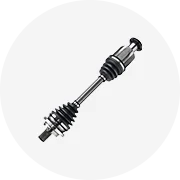Phổ biến trong ngành của bạn

















Các danh mục hàng đầu
Giới thiệu về mk3 nhôm heatbed
Alibaba.com mang đến cho bạn một dòng sản phẩm toàn diện có dung lượng cao, hiệu quả và mạnh mẽ. mk3 nhôm heatbed có thể giúp bạn thanh lọc và làm mát không khí bên trong phòng. Những mạnh mẽ và hiệu quả. mk3 nhôm heatbed không chỉ làm mát không khí bên trong phòng của bạn mà còn giúp kiểm soát độ ẩm hiện có, do đó cung cấp nhiệt độ thoải mái bên trong. Những nổi bật. mk3 nhôm heatbed đủ bền để tồn tại trong thời gian dài và được biết là thực hiện chức năng làm mát một cách nhất quán. Mua những sản phẩm đáng kinh ngạc này từ các nhà bán buôn và nhà cung cấp hàng đầu trên trang web với mức giá và ưu đãi cạnh tranh.
Những sản phẩm thông minh này. mk3 nhôm heatbed có chất lượng tốt và là những sản phẩm có tính bền vững cao, yêu cầu bảo trì tối thiểu trong khi sử dụng. Các sản phẩm này thân thiện với môi trường và không thải ra bất kỳ loại khí độc hại nào khi hoạt động. Những cái này. mk3 nhôm heatbed được trang bị tuyệt vời với tất cả các tính năng và công nghệ mới nhất có thể thúc đẩy làm mát thông minh, cải thiện chất lượng không khí bên trong phòng và đi kèm với công suất điện áp riêng biệt như 380/400 VAC. Những độ chính xác cao. mk3 nhôm heatbed là máy đặt sàn và được trang bị công suất làm mát đa dạng.
Alibaba.com có những tính năng nổi bật này. mk3 nhôm heatbed với nhiều kích thước, màu sắc, hình dạng, tính năng và dung lượng để bạn có thể chọn loại tốt nhất theo yêu cầu của mình. Các. mk3 nhôm heatbed có khả năng làm sạch và làm mát nhiệt độ của một căn phòng lớn và cũng rất lý tưởng cho ô tô. Những cái này. mk3 nhôm heatbed cung cấp các giải pháp HVAC hoàn hảo cho những người sử dụng chúng ở những nơi thương mại như văn phòng, phòng thí nghiệm, phòng thí nghiệm, cửa hàng may mặc, v.v.
Những máy thành thạo này cũng có sẵn ở nhiều loại khác nhau chẳng hạn như thiết bị xử lý không khí, điều hòa không khí tủ biến tần DC, điều hòa trung tâm, thiết bị năng lượng mặt trời, và nhiều hơn nữa. Tiết kiệm tiền bằng cách khám phá nhiều thứ khác nhau. mk3 nhôm heatbed phạm vi tại Alibaba.com và mua các sản phẩm chất lượng hàng đầu. Các sản phẩm này được chứng nhận ISO, CE, ROHS và có sẵn dưới dạng sản phẩm OEM.






















